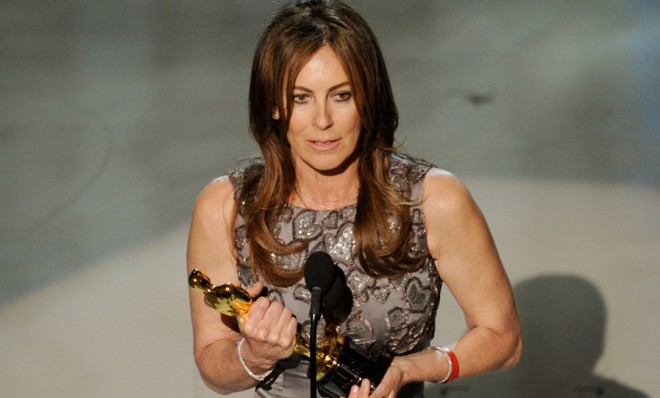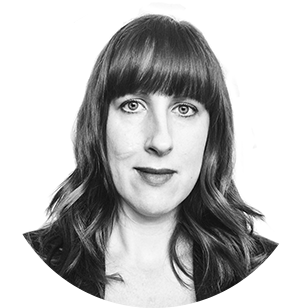Girls on Film: Of course we need more female directors!
By banking on more female filmmakers, Hollywood can introduce stories and viewpoints that are all but unseen on the silver screen


When Kathryn Bigelow won the Best Director Oscar for The Hurt Locker in 2010, it shined a spotlight on the struggle of female filmmakers in the industry. It took a staggering eighty-two Academy Award ceremonies for a woman to win the Best Director trophy, and only three other women had ever been nominated: Lina Wertmüller (1976's Seven Beauties), Jane Campion (1993's The Piano), and Sofia Coppola (2003's Lost In Translation). At the time, Bigelow's win engendered so much hope among female filmmakers and commentators that the term "The Bigelow Effect" was coined to describe the possibility that Bigelow had broken through the "glass ceiling," creating major opportunities for women in Hollywood and fostering real change.
But the years following Bigelow's Oscar win have been disappointing, to say the least. In January 2012, Dr. Martha M. Lauzen's annual survey of women in the film industry revealed that female filmmakers' share of the industry had actually decreased from nine percent to five percent between 1998 and 2012. And though the Sundance Film Festival offered an unprecedented equal roster of male and female filmmakers this January, 2013 sees only two mainstream, wide-released films helmed by female directors — Kimberly Peirce's Carrie and Tina Gordon Chism's Tyler Perry Presents Peeples.
In a recent Broken Projector podcast, hosts Scott Beggs and Geoff LaTulippe discussed Hollywood's gender imbalance with Bunheads staff writer and feature filmmaker Beth Schacter. When asked to explain what culture was losing by having fewer female filmmakers, she responded:
The Week
Escape your echo chamber. Get the facts behind the news, plus analysis from multiple perspectives.

Sign up for The Week's Free Newsletters
From our morning news briefing to a weekly Good News Newsletter, get the best of The Week delivered directly to your inbox.
From our morning news briefing to a weekly Good News Newsletter, get the best of The Week delivered directly to your inbox.
I'm going to say something that is not popular. Nothing. Women do not have substantially different stories to tell — that's the problem. The problem is the idea that somehow women are magical or special or different… Women who are good writers and good directors have good stories to tell that have nothing to do with their gender. Men have good stories to tell that have nothing to do with their gender… My experience in the world is not based on my gender; my experience of the world is based on my experience of the world. [Broken Projector]
Schacter simultaneously hits on and misses the entire point: There is no gendered imperative to creativity. Of course men and women can (and do) create compelling films about men and women. The important thing here isn't a film's subject; it's perspective. Any woman's experience of the world will offer a point of view that differs from a man's — not because of biological differences, but because of the personal and environmental differences that go hand-in-hand with gender.
It's a simple matter of filming what one knows. A recent Sundance study found that female directors are more likely to features girls and women on screen than male directors. This fact alone can be a powerful tool for change in a world in which the Bechdel Test — which states that a film should contain at least two named female characters who talk to each other about something besides men (and which a shocking number of films fail) — is still relevant. More female filmmakers mean a greater focus on the female experience, just like decades of male directors have created more male-centric entertainment, a historical habit that is now so normalized that many don't even notice. This is what film critic B. Ruby Rich once described as the reinforcement of "the invisibility of women," which many modern filmmakers unconsciously hold up in their work; when Big Fish scribe John August applied the Bechdel Test to his own work, he was surprised to see how little his female characters talked to one another. He simply did not notice the imbalance.
Environmentally, it's a matter of the experiences Schacter incorrectly thinks are gender-free. She describes working with Amy Sherman-Palladino, showrunner of Gilmore Girls and now Bunheads: "Gender is just simply not part of the equation. She doesn't do anything with her lady parts." Of course, Sherman-Palladino's anatomy doesn't make her think in a certain way, but her experience as a woman certainly does. Sherman-Palladino's shows thrive on female friendships and offer perspectives that are rare in the television world, which was made clear yet again in Bunheads' recent finale when her teenage stars considered losing their virginities. The resulting montage wasn't, like so many other virginity narratives, about boys and pressure; instead, the teens study various feminist books to learn about sex. "I'm an intelligent woman, and I will not have ignorant friends," one asserts.
It's a simple formula: If you increase the number of female filmmakers, there will be more women experiencing all manner of life and fantasy on-screen — and the more there are, the easier it will be to condition women and men to relate to male and female protagonists. This doesn't mean that men can't write progressive women, or that women don't write reductive stories for female characters. It only means that widening the playing field will create more opportunity for different perspectives.
A free daily email with the biggest news stories of the day – and the best features from TheWeek.com
But there's another problem at hand: No matter how many female creatives there are, they are blocked by a studio system notorious for its sexist thinking. In the podcast, Schacter states: "Are employers employing based on a skill set regardless of gender? My experience hasn't been that. As a director, it's been a very different set of expectations and there's a lot of old-school sexism that still exists." Her experiences are not singular. Directors from Catherine Hardwicke (Twilight) to Ridley Scott (Alien) have also noted the pressure exerted by studios to make films that feature male protagonists, and Oscar-nominated writers Naomi Foner (Running on Empty) and Nia Vardalos (My Big Fat Greek Wedding) have spoken out about studio heads who have called hit films centered on female protagonists, from Sex and the City to The Hunger Games, "flukes."
Luckily, the "fluke" train of thought is getting harder and harder to defend. The five highest-grossing films of 2012 featured strong women: Twilight and The Hunger Games featured female stars, and Skyfall, The Dark Knight Rises, and The Avengers each boasted strong female characters essential to their films' storylines. A year earlier, Bridesmaids became the most financially successful film in Judd Apatow's long roster as producer and/or creator. And a year before that, Sandra Bullock became the first actress to have a film marketed on her star power earn more than $200 million at the domestic box office (The Blind Side).
But if that "fluke" narrative is truly going to disappear, both critics and audiences need to do their part. With the proliferation of movie marketing, even the most casual moviegoer is aware of mainstream films and big-name filmmakers. But indies and art-house films, where female directors tend to be afforded more opportunities, rise and fall on word-of-mouth and access. Men dominate the critical side of the business as well as the creative side, and their choices unfold, much like studio choices, for male-dominated pictures. Many "Best" lists produced by critics — a totally arbitrary and subjective ranking system — fail to include female filmmakers at all, not because their films aren't worthy, but because the listmakers either aren't familiar with the breadth of female filmmakers out there, or forget about them because their names aren't a part of everyday discourse. (The film website Movie Mezzanine copped to this problem earlier this year after creating a list of the top working directors that included only one woman.)
Finding female filmmakers without the aid of a robust mainstream discourse requires casual movie fans to become cinematic connoisseurs, risking time and ticket prices on unknown names, and putting in extra research to find the excellent content — but it's worth the effort. Broken Projector suggests the likes of Lexi Alexander (Punisher: War Zone), Dee Rees (Pariah), Xan Cassavetes (Kiss of the Damned), and Mary Harron (American Psycho) as just some of the female filmmakers worthy of more attention. The list that launched Girls on Film's first piece at The Week mentions more — and in future installments of the column, we'll do our best to help open the women-centric filmmaker's door, because there's an entire cinematic world out there we rarely see.
Girls on Film is a weekly column focusing on women and cinema. It can be found at TheWeek.com every Friday morning. And be sure to follow the Girls on Film Twitter feed for additional femme-con.
Monika Bartyzel is a freelance writer and creator of Girls on Film, a weekly look at femme-centric film news and concerns, now appearing at TheWeek.com. Her work has been published on sites including The Atlantic, Movies.com, Moviefone, Collider, and the now-defunct Cinematical, where she was a lead writer and assignment editor.
-
 Quiz of The Week: 22 – 28 November
Quiz of The Week: 22 – 28 NovemberQuiz Have you been paying attention to The Week’s news?
-
 The week’s best photos
The week’s best photosIn Pictures Ready for lift-off, the odd one out, and more
-
 The Week Unwrapped: Have pedigree dogs had their day?
The Week Unwrapped: Have pedigree dogs had their day?Podcast Plus what can we learn from Slovenia’s rejection of assisted dying? And can politicians admit their weaknesses?
